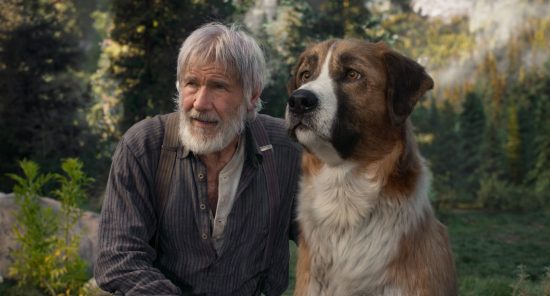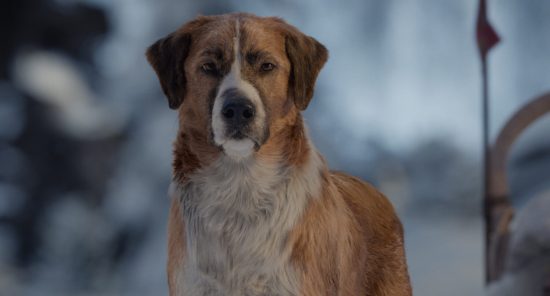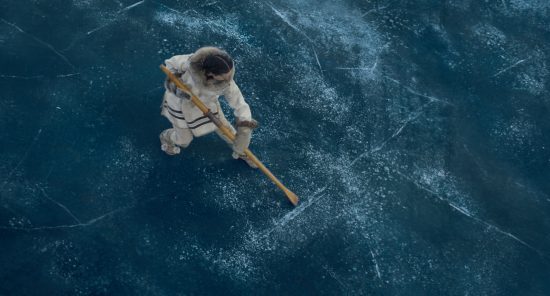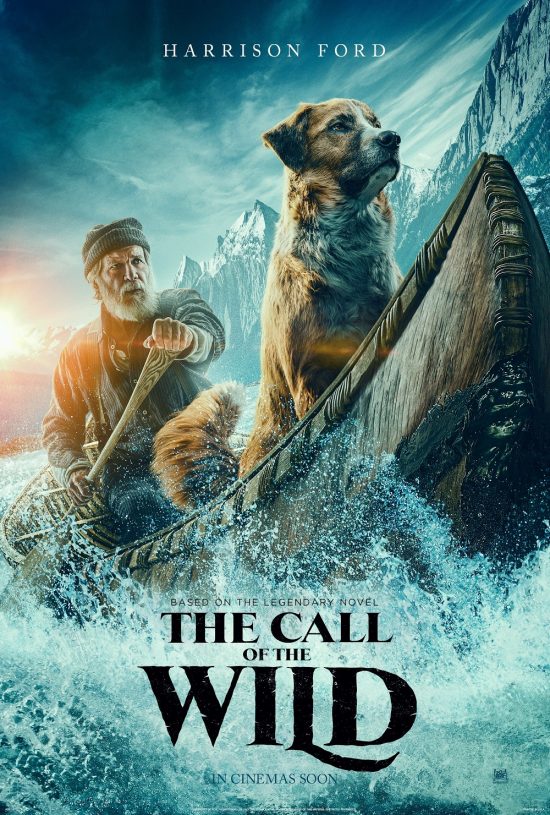Review: The Call Of The Wild – “A rustic, intimate, and delightfully old-school yarn”
There has been a tidal wave of backlash directed towards this new re-telling of Jack Londen’s iconic 1903 adventure novel, The Call of the Wild. It seems the vast majority are really unhappy that the central hero, Buck – the hulking great canine – isn’t actually a real dog. There have been many adaptations of this classic story, with the likes of Clark Gable, Charlton Heston, and Richard Dreyfuss, all taking on the role of world-weary and hagged prospector, John Thornton. But by each actors’ side, there has always been a proper pooch. How can you possibly replace the intrinsic bond between man and his best friend with a CGI, motion-capture creation?
Well, quite easily in fact. To be honest, these criticisms are pretty inept. We aren’t talking about cartoonish, goofy animation here – rather beautifully realised, crisply rendered, and organic digital imagery; alive with texture and realism. Yes, there are minimal occasions where it’s apparent you’re watching a digital dog (most of which come in the playful and a little silly opening sequence, as you’re simply settling into the film), but soon enough, Buck becomes a living, breathing, fantastically spirited protagonist.
In this 2020 version, the great Harrison Ford adopts the role of Thornton; he’s a gruff, isolated man whose marriage has fallen apart and now he finds himself at the bottom of a bottle. He has several chance encounters with Buck before they inevitably partner up, and each one seems to leave an indelible mark. Meanwhile, big and boisterous Buck is uprooted from his plush and comfortable life of pamper in California, and transported to the unforgiving fringes of Yukon, Alaska; the gateway to the “Gold Rush” as thousands of budding prospectors fled to its arctic plains in search of the enigmatic rock.
Something particularly striking about The Call of the Wild is that whilst its technology might be forward-thinking (potentially to its detriment, as many have keenly pointed out), the film itself is remarkably old-fashioned. It lacks unnecessary noise and fuss, benefits from a breezy running time, and establishes itself on a potent, primary message, as opposed to an onslaught of chaotic and unfocussed subplots. In short, children will probably find it boring. Although this is marketed as a family film, it’s more of a drama – one pulsing with the age-old debate of nature vs. nurture. This is a mature picture built around mature subject matter, with a mature outlook on cinematic craft and execution.
This author found it just so refreshing to watch. It feels fully transportive – thrusting the spectator into the bitter cold; so much so, the frost burrows into your cheeks. Glacial, frosty cinematography punctuates every frame; making the environment as much of a mysterious and primal character as our doggy hero. The landscape and its nature rules the roost out here; we are merely bystanders amidst its overwhelming power. The film’s admittedly limited set pieces are earned not expected, making them all the more rewarding. A particular standout sequence sees a nail-biting sled pull through an avalanche, which thrashes and crashes; again, hammering home the message that in the furthest corners of the world, it’s not about living, rather surviving.
As we’ve established, Buck is a motion-capture creation, and he is played by Terry Notary (perhaps best known as the rampaging man-ape in Ruben Östlund’s The Square). The humanity he brings to our protagonist pooch cannot be underestimated. The look in the eyes, the craning of the neck; it all screams with a level of unmistakably authenticity. In this writer’s opinion, it is about as close to realism as the filmmakers were going to get with a digital lead character. Ford is basically playing himself at this point, but he’s earned that. Much like Clint Eastwood, it’s far more about him taking ownership of the screen than it is the character. He lands the big emotional moments, though; you genuinely become connected to the pair, and voyage with them as they embark on the adventure of a lifetime.
The selection of other performances are somewhat mixed. Karen Gillan turns up in an incredibly hammy and underutilised role, whilst Omar Sy benefits from a significantly more fleshed and engaging screen presence. Then there’s Dan Stevens, who plays the film’s primary villain – a greedy, narcissistic ogre who’ll beat the dogs until the work for him the way he expects. It’s quite possibly the most over-the-top and gloriously silly performance you’ll see from him, and it would be a crying shame to miss it. Sure, he is supposed to be intimidating and repugnant, but I found him hilarious – it made for a really enjoyable contrast to the rest of the film’s tone.
The Call of the Wild is a meditative and thoughtful account of man’s connection to his beloved hound, and how that hound has a connection to a deeper, more instinctive heritage, too. It teaches valuable lessons to a generation so desperately out of touch with the wilderness and nature, which makes for a revitalising change from all the mind-bending box-office junk we are normally force-fed. It has issues, and likely won’t be an essential watch for many, but those who do wade through the snow and ice will be rewarded with a rustic, intimate, and delightfully old-school yarn packed with character and clarity. Now that’s a good boy.
The Call of the Wild is out now in UK cinemas courtesy of 20th Century Studios.














